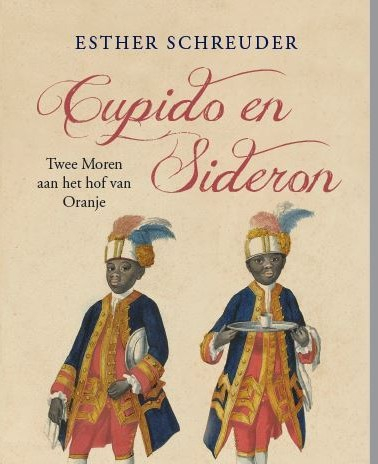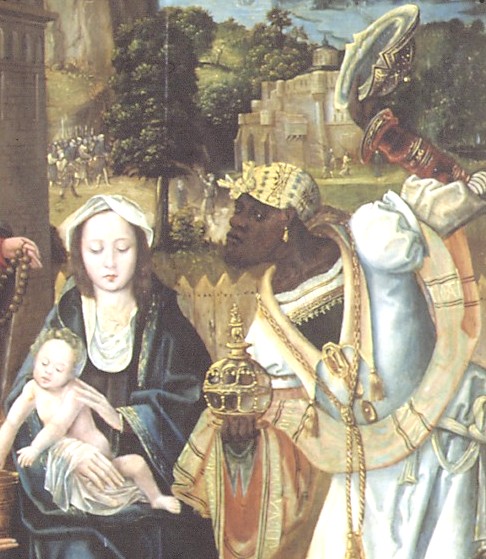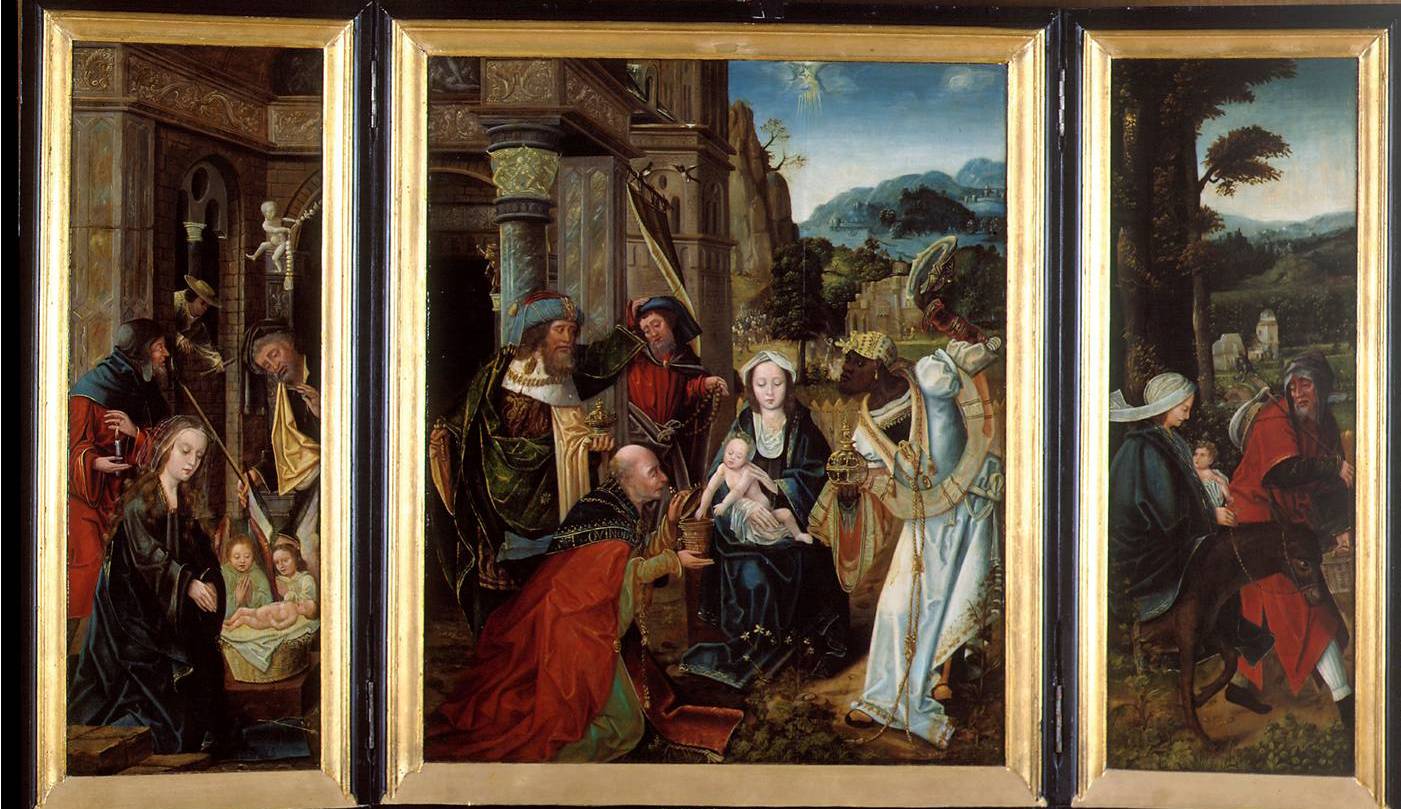
first half 16th century
Oil on panel, 89.9 x 37.9, 89.8 x 37.4, 90.1 x 755 cm
Musea Brugge, Hospitaalmuseum O.L.V.-ter-Potterie, 0.P49.I
Literature
Ewing 2006, pp. 275-295; You 2006, pp. 114-157; exhibition catalogues:Antwerp 2005
As I wrote earlier : ‘The two biblical scenes most commonly depicted in art come from the New Testament, from the Gospels of St Matthew and St Luke. They are The Nativity of Jesus (Matthew 1:18-25 and Luke 2: 1-7) and The Adoration of the Magi (Matthew 2:1-12). Although the Bible only speaks of magi, or wise men, who present Christ with gold, frankincense and myrrh, Christian literature and art transformed these three into kings, one of whom was subsequently represented as black. The arrival of these secular sovereigns bringing gifts to the Christ Child is regarded as an acknowledgement of Jesus’ task in the world.
In works of art the kings could function as more than one symbol. They could represent the regions of the world, the ages of man, ambassadors of peace, wealth from faraway, foreign countries, trade with these countries and more.’
This Adoration is a magnificent example of Antwerp mannerism in the early sixteenth century. The artist has paid considerable attention to the sumptuous fabrics, extravagant clothing with long sleeves, contrasting colours, rich accessories and exotic headgear. The Black King has been accorded a prominent role, drawing all the attention with his striking, pale-blue clothing trimmed with gold and flamboyant pose.
At the beginning of the sixteenth century the Adoration of the Magi became a popular subject in Antwerp for it offered an opportunity to represent wealth, with extravagant fashions and exotic figures.
Paintings of this theme became a commercial success and hundreds of Adorations were made in smaller formats for the art market. One of the reasons for the subject’s enormous success is that the Flemish, Italian and Portuguese merchants who brought wealth to Antwerp identified themselves with the Kings: they bought paintings on this theme from artists and even baptised
their children Caspar, Melchior and Balthazar.
Antwerp merchants who traded with Africa appear to have had a preference for the name Balthazar. Antwerp had become the commercial hub of Europe and was growing rapidly. It was the chief centre for the transcontinental trade in costly fabrics, including silk, which feature prominently in Adorations from this period.
A further parallel can be made between the Three Kings, who visited Jesus and offered him gifts, and the gifts made to a new sovereign by the local authorities during the sovereign’s blijde inkomste
(‘joyous entry’ or first ceremonial entrance into a town or city).
On such occasions a sovereign would be presented with costly gifts in the form of beakers and goblets, to which the silver keys of the city, for unlocking its gates, were sometimes added.
Esther
With thanks to Errol van de Werdt
From the Black is beautiful, Rubens to Dumas exhibition catalogue (2008)
Research has been made possible thanks to a contribution of de Mondriaan foundation, AFK and VSB fonds.
About me
In 2008 I was guest curator of the exhibition Black is beautiful. Rubens to Dumas. Important advisors: Elizabeth McGrath (Rubens and colleagues, Warburg institute Image of the Black in Western Art collection), Carl Haarnack (slavery in books), Elmer Kolfin (slavery in prints and paintings) en Adi Martis (contemporary art). Gary Schwartz made his research for The Image of the Black in Western Art available to me.

In 2014 my essay ‘Painted Blacks and Radical Imagery in the Netherlands (1900-1940)’ was published in The Image of the Black in Western Art Volume V (I). (ed. David Bindman, Henry Louis Gates jr.)

In 2017 I published a book about the black servants at the Court of the Royal Van Oranje family. More than a thousand documents have been found about their lives. (only in Dutch)

All photos on this site are not intended for any commercial purpose. I have tried to trace all the rules and rights of all images. As far as I know, these images can be used in this way. If you ar a copyright holder and would like a piece of your work removed or the creditline changed then please do not hesitate to contact me.
estherschreuderwebsite@gmail.com



